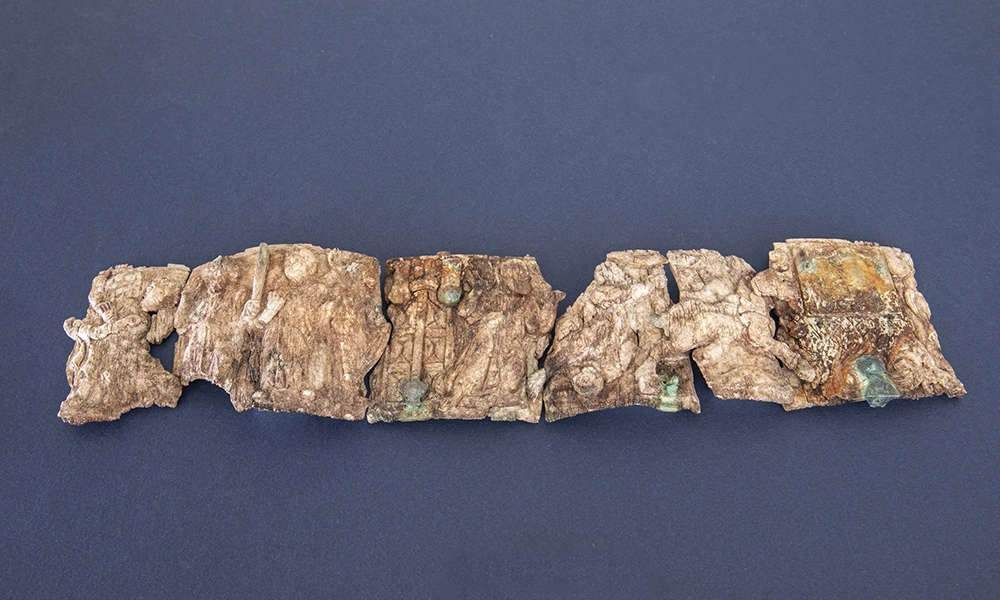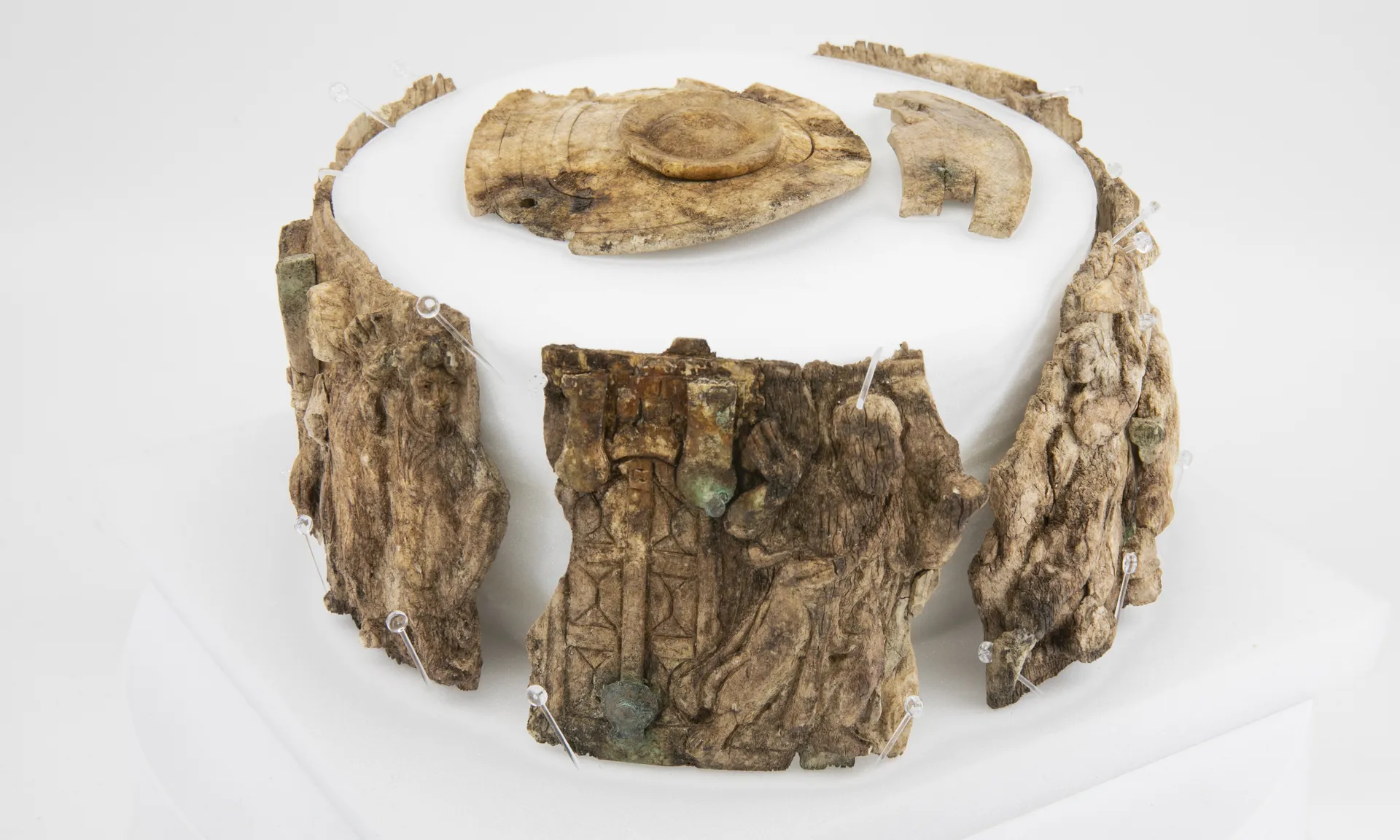
(Photo: University of Innsbruck)
PROSPECT HEIGHTS — Archaeologists excavating the site of a church in southern Austria have unearthed a marble shrine containing a relic they believe may be tied to Moses receiving the Ten Commandments.
The archaeologists, from the University of Innsbruck, Austria, said in a press release that the shrine contained a 1,500-year-old ivory box, adorned with Christian motifs, that was discovered under an altar inside a chapel at the summit of Burgbichl, a small hill, in the municipality of Irschen.
Archaeologists from the university have been carrying out excavations in
Irschen, part of the Carinthian Drava Valley, since 2016.
“We know of around 40 ivory boxes of this kind worldwide and, as far as I know, the last
time one of these was found during excavations was around 100 years ago,” said
lead archaeologist Gerald Grabherr. “The few pyxes [boxes] that exist are either preserved in cathedral treasures or exhibited in museums.”
One motif shows a man, his head turned, with a hand rising out of the sky above him, placing something between the man’s arms, followed by depictions of biblical figures.
“This is the typical depiction of the handing over of the laws to Moses on Mount Sinai, the beginning of the covenant between God and man from the Old Testament,” Grabherr said.
The last motif depicts a man in a chariot with two horses harnessed to it. The motif also features the same hand coming out of the clouds, pulling this figure up into heaven.

“We assume that this is a depiction of the ascension of Christ, the fulfillment of the covenant with God. The depiction of scenes from the Old Testament and their connection with scenes from the New Testament is typical of late antiquity and thus fits in with our pyx,” Grabherr added. “However, the depiction of the Ascension of Christ with a so-called biga, a two-horse chariot, is very special and previously unknown.”
The researchers discovered two Christian churches, a cistern and the personal belongings of the settlement’s former inhabitants. Towards the end of the Roman Empire, when times were more uncertain, settlers resided on hilltops that were easier to defend, abandoning the valley, Grabherr said in the release.
Researchers are conducting further investigations into the origin of the ivory, the metallic components and the wooden parts that were also found in the marble box.
“The archaeological and art-historical significance of the pyx cannot be denied,” said Grabherr.
The archaeological team also noted that further investigations into the Irschen reliquary are underway. Restorer Ulrike Töchterle explained that “We still need to determine the exact origin of the marble, and we also want to specify the origin of the ivory. Metallic components — the hinges of the pyx were made of metal — are also still being examined, as is the glue that was used for the ivory.”
